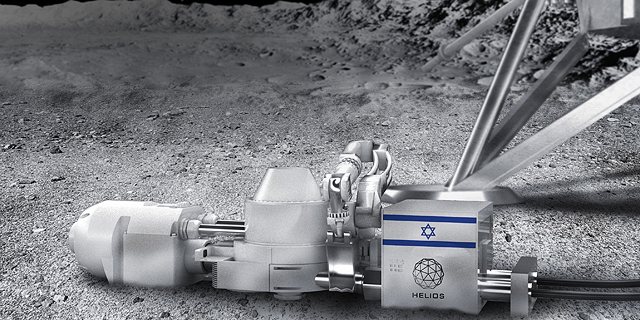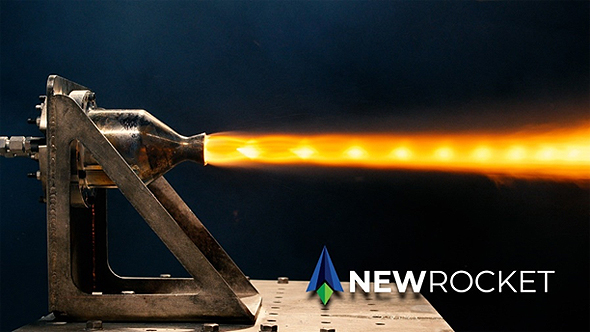
Israel awards nearly $6 million in grants to space tech startups
From growing super-vegetables in space to taking high-resolution images of oil spills, 11 Israeli companies that develop innovative space technologies will receive the grant. “It’s a tremendous economic growth engine,” said D-G of Israel Space Agency
The program aims to bolster the Israeli space tech market, and encourage space tech startups to grow, reduce their knowledge gaps, improve Israel’s competitiveness, and increase its scientific knowledge.The program is designed to support companies who either design or develop satellites or ground stations that are used for command & control and communication; instrumentation and equipment for calibrating space technologies, products for space systems; or processing and analyzing data from space. The companies will eventually reimburse IIA for the funding through royalty payments they gain from sales when their product reaches the commercial stage.
“The global space industry is going through a real revolution. The market has doubled in size over the past decade and is expected to grow to a trillion dollars in the coming years. The State of Israel has clear advantages in the space industry, but especially in the security domain. This program will strengthen and promote 11 companies in the fields of satellite communications, rocket propulsion, sensors that will contribute to dealing with climate change, lunar mining, and agriculture,” said Orit Farkash-Hacohen, Minister of Innovation, Science and Technology.
The companies were selected based on their level of technological innovation, the capabilities of their R&D teams, proof of a consolidated business model, and advantages their product poses in comparison with global competitors.
The winning companies are as follows:
1. AYECKA Communication Systems, which researches advanced Internet of Things (IoT) communications systems using a satellite that enables the transfer of large amounts of IoT notifications using Low Earth Orbit (LEO) satellites. This technology will allow the supply of continuous communication to autonomous vehicles, enabling them to travel to remote areas, even when cellular coverage isn't available.2. Paxis, whose SpaceSiC project develops advanced ceramic materials for the production of complicated 3D bodies and structures from silicon carbide for satellite and space applications. Ceramic materials, especially silicon carbide, contain optimal properties for work in extreme conditions in space environments. Paxis’ products contain high thermal conductivity combined with low heat dissemination, and give materials thermal stability. It plans to produce complex 3D models that are thin-walled, and suitable for satellite parts such as mirror-base components.
3. Terra Space Lab is working on a space shuttle scanner with a multi-spectral infrared antenna. The unique pod can be installed on the back of nanosatellites without requiring changes to payloads, allows multispectral scanning of the territory in the infrared realm, and carries out real-time data processing in space, while significantly lowering costs.
4. NSLComm develops technologies for global ground coverage using nanosatellite constellations with its pop-up antennas, which are made of unique materials that perform ideally in gravity and zero-gravity conditions, slashing the prices of launching payloads. Its reflect array antenna technology uses multi-beam conditions that support broadband, and can route between satellites and ground points without having to rely on channelizer gateways.
Read More
5. GorillaLink is developing a product that combines satellite communications capabilities for IoT solutions for end-customers, harnessing many satellite networks in order to provide global satellite communications coverage as solutions for IoT issues, and focuses on areas without cellular coverage or for use as backup.
6. GreenOnyx grows fresh superfood on spaceships for astronauts on deep space missions. Over time, one of the main constraints NASA has dealt with is finding ways to preserve astronauts’ nourishment and health on long-duration space flights. A potential manned one-way flight to Mars could take up to nine months, but GreenOnyx has found a way to grow healthy super-vegetables onboard while supplying oxygen on spaceships and absorbing CO2 that is emitted by astronauts’ breath to feed plants. The vegetables can also be consumed without cooking or processing.
7. HELIOS has developed technology to mine oxygen from the moon by using a reactor that processes regolith, or lunar soil, separating it into oxygen and metal to power lunar launches, lunar vehicles, sustain astronauts, and build lunar bases or settlements on other planets without the need to launch heavy materials to the Moon. Helios will launch three small cargoes to the moon by 2024, in order to demonstrate the technology on the Moon.
8. Semiconductor Devices (SCD) develops a broadband detector, which can capture images from the visible to the extended SWIR spectrum on hyper-spectral space cameras. This can be used to film Earth from space while covering a wide area of territory with high resolution and a large number of pixels, and can differentiate between materials via distant passive sensing. The detector can identify natural vegetation and camouflage, different minerals on land, their density in the atmosphere (such as aerosols and water vapor), note oil spills and pollution at sea, plant diseases and forest fires, and detect humidity and salinity of land plots for agricultural purposes.9. Space Plasmatics designs electric ignition systems for microsatellites based on plasma, or electrically-charged gas, using dimensional Hall Thruster technology and a minute electricity supply. Its microHET engine uses a narrow metal channel, which enables ionization of gas and the creation of plasma that operates at only 20 watts yet produces a 1 millinewton impulse. It can be used for small satellite missions, and assist them in changing or maintaining course, de-orbiting, or avoiding collisions.
10. NewRocket develops space ignition systems for launching large satellites. Today, chemical rocket engines for space use hydrazine, a highly toxic and costly substance. NewRocket has created a “green” alternative non-toxic bi-propellant rocket engine gel, which can be used for launches, satellite ignition systems, spaceships, and landers, while lowering the costs of launch and fuel. 11. Ramon Space develops space-resilient computing systems that are the core of new space satellites and deep space missions. Powered by its unique AI/ML processors, its software-empowered systems store, process and move data in space, while withstanding the hard conditions in space. So far, Ramon.Space’s technology has powered over 50 international space missions, including the Japanese Hayabusa-2 craft to a far-off asteroid located nine million miles from Earth, 162173 Ryugu.

